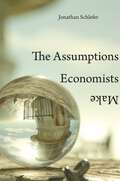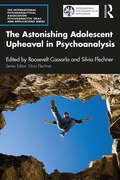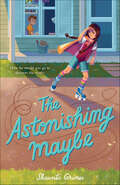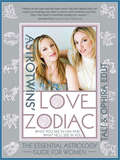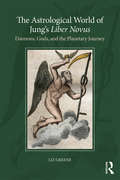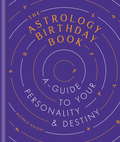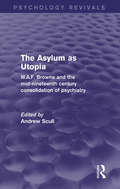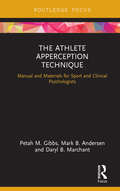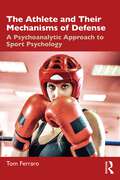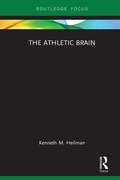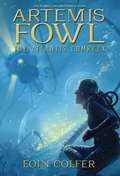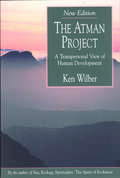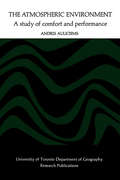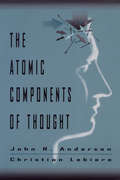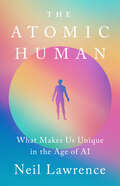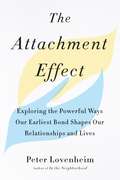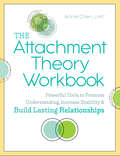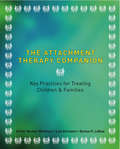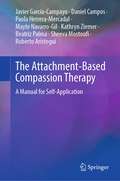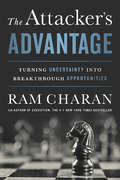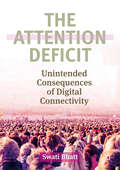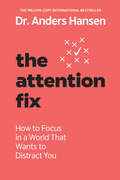- Table View
- List View
The Assumptions Economists Make
by Jonathan SchleferEconomists make confident assertions in op-ed columns and on cable newsâso why are their explanations often at odds with equally confident assertions from other economists? And why are all economic predictions so rarely borne out? Harnessing his frustration with these contradictions, Jonathan Schlefer set out to investigate how economists arrive at their opinions. While economists cloak their views in the aura of science, what they actually do is make assumptions about the world, use those assumptions to build imaginary economies (known as models), and from those models generate conclusions. Their models can be useful or dangerous, and it is surprisingly difficult to tell which is which. Schlefer arms us with an understanding of rival assumptions and models reaching back to Adam Smith and forward to cutting-edge theorists today. Although abstract, mathematical thinking characterizes economistsâ work, Schlefer reminds us that economists are unavoidably human. They fall prey to fads and enthusiasms and subscribe to ideologies that shape their assumptions, sometimes in problematic ways. Schlefer takes up current controversies such as income inequality and the financial crisis, for which he holds economists in large part accountable. Although theorists won international acclaim for creating models that demonstrated the inherent instability of markets, ostensibly practical economists ignored those accepted theories and instead relied on their blind faith in the invisible hand of unregulated enterprise. Schlefer explains how the politics of economics allowed them to do so. The Assumptions Economists Make renders the behavior of economists much more comprehensible, if not less irrational.
The Astonishing Adolescent Upheaval in Psychoanalysis (The International Psychoanalytical Association Psychoanalytic Ideas and Applications Series)
by Roosevelt Cassorla Silvia FlechnerThis book brings together international contributors to share insight from their theoretical and clinical work with adolescents, considering the different psychopathological responses they see in adolescent patients and how these can be worked with in analysis.Each chapter addresses a specific topic, focusing on representing the clinical realities facing psychoanalysts in treating adolescents with different types of disturbances at the psychic level. They cover a range of situations and perspectives, including discussion of maternal violence, the erotic field, self-mutilation, and social withdrawal, with a core focus on issues affecting contemporary adolescents. Bringing together a vast range of experience, The Astonishing Adolescent Upheaval in Psychoanalysis presents a new approach which re-establishes the impact of the responses of significant objects in the impasses present in narcissistic suffering. This book will be of great interest to all psychoanalytic and psychodynamic clinicians working with adolescents.
The Astonishing Color of After
by Emily X.R. Pan<P> A stunning, heartbreaking debut novel about grief, love, and family, perfect for fans of Jandy Nelson and Celeste Ng. <P>Leigh Chen Sanders is absolutely certain about one thing: When her mother died by suicide, she turned into a bird. <P>Leigh, who is half Asian and half white, travels to Taiwan to meet her maternal grandparents for the first time. There, she is determined to find her mother, the bird. In her search, she winds up chasing after ghosts, uncovering family secrets, and forging a new relationship with her grandparents. And as she grieves, she must try to reconcile the fact that on the same day she kissed her best friend and longtime secret crush, Axel, her mother was taking her own life. <P><b>A New York Times Bestseller</b> <P>Alternating between real and magic, past and present, friendship and romance, hope and despair, The Astonishing Color of After is a stunning and heartbreaking novel about finding oneself through family history, art, grief, and love.
The Astonishing Maybe
by Shaunta GrimesFriendship, heartbreak, and defining what family means are rarely as sensitively, beautifully portrayed in middle-grade fiction. Shaunta Grimes is an extraordinary new talent. Gideon hates the idea of moving to Nevada from the East Coast. It's so empty and hot in his new neighborhood. Only one person his age lives nearby: the girl next door, Roona.Gid notices right away that Roona is . . . different. She wears roller skates and a blanket as a cape when she needs to feel strong. What he doesn't bargain for, however, is how far outside his comfort zone Roona will take him as she enlists his help in finding her long-gone father. For a kid who's not allowed to ride his bike more than a few blocks from home, this will be an adventure of a lifetime.
The AstroTwins' Love Zodiac
by Ophira Edut Tali EdutDemystify men and transform any relationship. Discover what you see in him and what he'll see in you. The Astro Twins have been using the zodiac for over 15 years to help couples find the love affair of their dreams. A good relationship may mean adjusting to someone who often thinks, acts, and views the world in a way totally foreign to you. You can have a great relationship with a man of any zodiac sign--the key is to learn what makes him tick. Using this definitive guide to understand his personality, his preferences, and his values will help you decide whether you're in it for the long haul--or not. Breaking down the entire astrological anatomy of all 12 signs of men, you'll quickly discover: How he courts, flirts, and shows he's committed; How to tell if he's serious or just playing around; What turns him on and off; How to prep for your first date, his first visit to your place, and meeting his family; What he values in life, a woman, and a relationship; Why he'd cheat and how to tell if he's serious or just playing around; When it's over for good; Commonly misunderstood signals; Your best moves; Sign-by-sign compatibility--what really happens in every combination, including the conflicts, the benefits, the compromises, and the ways you'll both grow from being together.
The Astrological World of Jung’s 'Liber Novus': Daimons, Gods, and the Planetary Journey
by Liz GreeneC. G. Jung’s The Red Book: Liber Novus, published posthumously in 2009, explores Jung’s own journey from an inner state of alienation and depression to the restoration of his soul, as well as offering a prophetic narrative of the collective human psyche as it journeys from unconsciousness to a greater awareness of its own inner dichotomy of good and evil. Jung utilised astrological symbols throughout to help him comprehend the personal as well as universal meanings of his visions. In The Astrological World of Jung’s Liber Novus, Liz Greene explores the planetary journey Jung portrayed in this remarkable work and investigates the ways in which he used astrological images and themes as an interpretive lens to help him understand the nature of his visions and the deeper psychological meaning behind them. Greene’s analysis includes a number of mythic and archetypal elements, including the stories of Salome, Siegfried and Elijah, and demonstrates that astrology, as Jung understood and worked with it, is unquestionably one of the most important foundation stones of analytical psychology, and an essential part of understanding his legacy. This unique study will appeal to analytical psychologists and Jungian psychotherapists, students and academics of Jungian and post-Jungian theory, the history of psychology, archetypal thought, mythology and folklore, the history of New Age movements, esotericism and psychological astrology.
The Astrology Birthday Book
by Michelle KnightEver wondered how your date of birth influences your personality, your loves and passions, and your path in life? The Astrology Birthday Book reveals how the precise alignment of the planets on your date of birth determines the characteristics that make you unique.
The Asylum as Utopia: W.A.F. Browne and the Mid-Nineteenth Century Consolidation of Psychiatry (Psychology Revivals)
by Andrew ScullWhat Asylums Were, Are, and Ought to Be, first published in 1837, was of considerable significance in the history of lunacy reform in Britain. It contains perhaps the single most influential portrait by a medical author of the horrors of the traditional madhouse system. Its powerful and ideologically resonant description of the contrasting virtues of the reformed asylum, a hive of therapeutic activity under the benevolent but autocratic guidance and control of its medical superintendent, provided within a brief compass a strikingly attractive alternative vision of an apparently attainable utopia. Browne’s book thus provided important impetus to the efforts then under way to make the provision of county asylums compulsory, and towards the institution of a national system of asylum inspection and supervision. This edition, originally published in 1991 as part of the Tavistock Classics in the History of Psychiatry series, contains a lengthy introductory essay by Andrew Scull. Scull discusses the social context within which What Asylums Were, Are, and Ought to Be came to be written, examines the impact of the book on the progress of lunacy reform, and places its author’s career in the larger framework of the development of Victorian psychiatry as an organised profession. Through an examination of Browne’s tenure as superintendent of the Crichton Royal Asylum in Dumfries, Scull compares the theory and practice of asylum care in the moral treatment era, revealing the remorseless processes through which such philanthropic foundations degenerated into more or less well-tended cemeteries for the still-breathing – institutions almost startlingly remote from Browne’s earlier visions of what they ought to be.
The Athlete Apperception Technique: Manual and Materials for Sport and Clinical Psychologists (Routledge Research in Sport and Exercise Science)
by Daryl B. Marchant Mark B. Andersen Petah M. GibbsAs the field of sport psychology has matured, so a greater appreciation for a diversity of training models, research methodologies, and therapeutic approaches, opposed to the dominant models of objective testing, has developed. The Athlete Apperception Technique (AAT) sets out a sport-specific projective test for practitioners working in sport and exercise service delivery or counselling work with athletes and coaches. This innovative book includes a basic primer on projective methods and the psychoanalytic theory behind them; a history of projective, storytelling instruments in clinical psychology; the development of the image set for the AAT; some examples of interpreting AAT image stories; instructions for the administration of the AAT; a scoring guide for the stories produced; and in-depth descriptions of the stimulus properties of each image in the AAT, along with all images presented as full-page illustrations. The AAT will help sport practitioners identify and assess personality features, relationships, anxieties, achievement, motivation, and perfectionism, and augment the recent shift in orientation for service delivery to athletes and provide a more in-depth understanding of athletes’ characters. The AAT is useful supplementary reading for students of sport psychology and a novel tool for any practicing sport psychologist.
The Athlete and Their Mechanisms of Defense: A Psychoanalytic Approach to Sport Psychology
by Tom FerraroThis important book explores the way athletes use defense mechanisms and coping skills to manage both the internal and external stress faced in competitive sport. Covering a range of case studies across various sports, the text showcases a taxonomy of immature, neurotic and mature defences available to the athlete and describes the benefits and drawbacks of each.A clear introductory section defines what defense mechanisms are and how they impact performance such as shame, anxiety, despair, memories of previous losses or fantasies about winning. Applying a psychoanalytic approach in line with the ideas of Sigmund Freud, Anna Freud, Fenichel, Leo Rangel, George Valliant and many others, the author uses each case study to connect the defense mechanism under investigation with the world of the athlete. Focused on delivering research-based evidence, the book helps readers deepen their understanding of the different types of defense mechanisms used by athletes across the globe, as the author explains what causes them, and recommends techniques for developing effective coping skills. Each chapter of the book also includes a reflective section that challenges the reader to think about how they can help athletes to grow and develop healthy defense mechanisms in any stage of their career.This invaluable text is geared towards the practitioners, researchers, psychoanalysts and students in sport psychology who wish to look more deeply into why athletes struggle. It is also an ideal resource for athletes interested in understanding ways to cope with the unrelenting, exciting and at times overwhelming pressure of competitive sports.
The Athletic Brain
by Kenneth M. HeilmanMany parts of the athlete’s body are important for performance, such as strong muscles and bones; healthy lungs and heart; and several sensory systems, including the vision, touch, and joint position senses, and the vestibular system for balance. However, the critical element for athletic performance is, "not what you have but how you use it." The organ that decides "how you use it" is the brain. This book explains how the brain allows the athlete to perform. The book starts with an outline of brain anatomy, which is necessary to understand how the brain functions. The book then outlines many critical aspects of the athlete’s brain, including learning motor skills; decision-making; hand preference; visual perception of speed, distance, and direction; balance; emotions and mood. Finally, the book discusses the adverse influence of brain injuries.
The Atlantis Complex (Artemis Fowl #7)
by Eoin ColferArtemis has committed his entire fortune to a project he believes will save the planet and its inhabitants, both human and fairy. Can it be true? Has goodness taken hold of the world’s greatest teenage criminal mastermind? Captain Holly Short is unconvinced, and discovers that Artemis is suffering from Atlantis Complex, a psychosis common among guilt-ridden fairies - not humans - and most likely triggered by Artemis’s dabbling with fairy magic. Symptoms include obsessive-compulsive behavior, paranoia, multiple personality disorder and, in extreme cases, embarrassing professions of love to a certain feisty LEPrecon fairy. Unfortunately, Atlantis Complex has struck at the worst possible time. A deadly foe from Holly’s past is intent on destroying the actual city of Atlantis. Can Artemis escape the confines of his mind and the grips of a giant squid in time to save the underwater metropolis and its fairy inhabitants?
The Atman Project
by Ken WilberThe Atman Project is widely hailed as the first psychology that succeeds in uniting East and West, conventional and contemplative, orthodox and mystical, into a single, coherent framework. This essential introduction to Ken Wilber's ideas on the evolution of human consciousness features a new foreword linking this work to Wilber's current thinking.
The Atman Project
by Ken WilberWilber traces human development from infancy into adulthood and beyond, into those states described by mystics and spiritual adepts. The spiritual evolution of such extraordinary individuals as the Buddha and Jesus hints at the direction human beings will take in their continuing growth toward transcendence.
The Atmospheric Environment: A Study of Comfort and Performance
by Andris AuliciemsIn this study energy-exchange processes and climatic influences are examined in relation to thermal comfort and work efficiency as exemplified in a schoolroom situation. The investigation tests fundamental hypotheses on meterotropisms and optimal thermal environments and demonstrates how daily variations within atmospheric environments are considerably more important than had been previously suspected. It also describes the experimental use of a variety of microclimatic instruments and thermal indices in conjunction with psychological tests of continuous mental performance. The Atmospheric Environment treats a complex problem from a broad multi-disciplinary standpoint and is of particular interest to climatologists, psychologists, teachers and educational administrators, heating and ventilating engineers, and to all concerned with environmental management.(Department of Geography Research Publications 8).
The Atomic Components of Thought
by John R. Anderson Christian J. LebiereThis book achieves a goal that was set 25 years ago when the HAM theory of human memory was published. This theory reflected one of a number of then-current efforts to create a theory of human cognition that met the twin goals of precision and complexity. Up until then the standard for precision had been the mathematical theories of the 1950s and 1960s. These theories took the form of precise models of specific experiments along with some informal, verbally-stated understanding of how they could be extended to new experiments. They seemed to fall far short of capturing the breadth and power of human cognition that was being demonstrated by the new experimental work in human cognition. The next 10 years saw two major efforts to address the problems of scope. In 1976, the ACT theory was first described and included a production rule system of procedural memory to complement HAM's declarative memory. This provided a computationally adequate system which was indeed capable of accounting for all sorts of cognition. In 1993, a new version of ACT--ACT-R--was published. This was an effort to summarize the theoretical progress made on skill acquisition in the intervening 10 years and to tune the subsymbolic level of ACT-R with the insights of the rational analysis of cognition. Although the appearance of generally-available, full-function code set off a series of events which was hardly planned, it resulted in this book. The catalyst for this was the emergence of a user community. Lebiere insisted that assembling a critical mass of users was essential to the ultimate success of the theory and that a physical gathering was the only way to achieve that goal. This resulted in the First Annual ACT-R Summer School and Workshop, held in 1994. In writing the book, the authors became seized by an aspiration that went beyond just describing the theory correctly. They decided to try to display what the theory could do by collecting together and describing some of its in-house applications. This book reflects decades of work in ACT-R accumulated by many researchers. The chapters are authored by the people that did that particular work. No doubt the reader will be impressed by the scope of the research and the quality of the individual work. Less apparent, but no less important, was the effort that everyone put into achieving the overall consistency and technical integrity of the book. This is the first work in cognitive science to precisely model such a wide range of phenomena with a single theory.
The Atomic Human: What Makes Us Unique in the Age of AI
by Neil D. LawrenceFrom a renowned computer scientist, this book seeks the distinctive human quality that will prevail against artificial intelligence. If artificial intelligence takes over decision-making what, then, is unique and irreplaceable about human intelligence? The Atomic Human is a journey of discovery to the core of what it is to be human, in search of the qualities that cannot be replaced by the machine. Neil Lawrence brings a timely, fresh perspective to this new era, recounting his personal journey to understand the riddle of intelligence. By contrasting our own intelligence with the capabilities of machine intelligence through history, The Atomic Human reveals the technical origins, capabilities, and limitations of AI systems, and how they should be wielded–not just by the experts, but ordinary people.
The Attachment Effect: Exploring the Powerful Ways Our Earliest Bond Shapes Our Relationships and Lives
by Peter Lovenheim"Every reader will find this book about attachment enlightening."--Dr. Sue Johnson, author of Hold Me Tight"Does a magnificent job of revealing how attachment manifests at the workplace, in friendships, religion, and even politics.” --Amir Levine, M.D., author of AttachedA revealing look at attachment theory, uncovering how our early childhood experiences create a blueprint for all our relationships to come Attachment theory is having a moment. It’s the subject of much-shared articles and popular relationship guides. Why is this fifty-year-old theory, widely accepted in psychological circles, suddenly in vogue? Because people are discovering how powerfully it sheds light on who we love--and how. Fascinated by the subject, award-winning journalist and author Peter Lovenheim embarked on a journey to understand it from the inside out. Interviewing researchers, professors, counselors, and other experts, as well as individuals and couples whose attachment stories illuminate and embody the theory's key concepts. The result is this engaging and revealing book, which is part journalism, part memoir, part psychological guide--and a fascinating read for anyone who wants to better understand the needs and dynamics that drive the complex relationships in their lives.Topics include: * What it means to be securely and insecurely attached * How our early childhood experiences create a blueprint for future relationships--and how to use those insights to gain self-awareness and growth * Why anxious and avoidant attachment types tend to attract each other, and how to break the negative cycle * How anyone can work to become "earned secure" regardless of their upbringing and past relationships.
The Attachment Theory Workbook: Powerful Tools to Promote Understanding, Increase Stability, and Build Lasting Relationships (Attachment Theory in Practice)
by Annie Chen LMFTBuild stronger relationships with strategies grounded in attachment theory Attachment theory explores the different ways we develop connections with others. If you're searching for a way to create stronger, healthier, and more authentic relationships with the people you love, The Attachment Theory Workbook can help. It's your guide to understanding your own attachment style and exploring actionable exercises to improve honesty, intimacy, and communication with your partner, family, or close friends. This workbook offers: The basics of attachment theory—Find a comprehensive overview of the Anxious, Avoidant, and Secure attachment styles, with self-assessments that help you understand which ones apply to you. Active strategies for healing—Develop your relationship skills with exercises like listing what you love about someone, and answering questions about how hypothetical scenarios make you feel. For yourself and others—This expert advice helps you explore your own attachment style as well as identify the attachment style of others, so you can better understand their perspective. Lay the foundation for strong and lasting relationships with The Attachment Theory Workbook.
The Attachment Therapy Companion: Key Practices for Treating Children & Families
by Arthur Becker-Weidman Lois A. Ehrmann Denise LeBow<P> An all-in-one professional practice guide. <P> Here in a single accessible guide, is a comprehensive go-to resource on the foundational principles and treatment guidelines for doing attachment therapy. Based on the work of the Association for Treatment and Training in the Attachment of Children (ATTACh), a leading organization on attachment in child development, it provides all the nuts and bolts a clinician needs to be familiar with to provide effective, informed, attachment-focused treatment to children and families. <br> • A synopsis of attachment theory and styles <br> • Core principles of attachment-focused therapy (synchrony, attunement, reciprocity, repair, regulation, and more) <br> • Core concepts of trauma and trauma-focused therapy (resistance, therapeutic, and building a coherent narrative) <br> • Intake and assessment methods <br> • Differential diagnosis <br> • Best practice standards and interventions <br> • PTSD and other comorbidities <br> • Treatment planning and behavior management <br> • Vicarious trauma <P> Complex trauma and developmental trauma disorder are also covered in depth, as well as up-to-date information on how brain science has changed our understanding of relationships and developmental functioning, and, in turn, phases of treatment and intervention options.
The Attachment-Based Compassion Therapy: A Manual for Self-Application
by Daniel Campos Roberto Aristegui Javier García-Campayo Paola Herrera-Mercadal Mayte Navarro-Gil Kathryn Ziemer Beatriz Palma Sheeva MostoufiThis book is a manual for self-application of the Attachment-Based Compassion Therapy (ABCT) protocol, that can be either self-applied by any individual in a psychoeducational context or as a support for a therapeutic process guided by a professional. Compassion therapy is a third-generation psychotherapy that has been used in association with mindfulness in recent years. In particular, attachment-based compassion therapy (ABCT) is a protocol that can be used in both the general and psychiatric population with the aim of promoting compassion and self-compassion. ABCT is based on attachment theory and, therefore, includes practices to raise awareness and/or address maladaptive aspects, where appropriate, of the attachment styles developed with parents. This process is taught as a form of both compassion and self-compassion in order to improve present-day interpersonal relationships and well-being in general. In the face-to-face group format, ABCT has been demonstrating efficacy and applicability for healthy people and for the treatment of fibromyalgia, depression, anxiety and adjustment disorders. This book presents a self-applied version of ABCT that operates along the lines of the original model and has been adapted and developed to be fully self-applied via the Internet in 8 sequential modules:Introduction to attachment-based compassion therapyPreparing ourselves for compassion: kind attentionDiscovering our compassionate worldDeveloping our compassionate worldUnderstanding our relationship with compassionWorking on ourselvesUnderstanding the importance of forgivenessConsolidating the practice of compassion The content is presented through texts, pictures, tables and figures, including links to downloadable audio files for formal meditation practices with specific guides and instruction for each meditation. The transcripts to each guided meditation are also included as appendices.
The Attachment-Based Focused Genogram Workbook: Expanding the Realms of Attachment Theory
by Rita DeMaria Briana Bogue Veronica HaggertyThe Attachment-Based Focused Genogram Workbook is a hands-on guide for clinicians looking to integrate attachment research and family systems theory into their practice, with particular attention to intergenerational transmission processes. The book introduces a range of relationship mapping and timeline tools, grounded in the use of focused genograms and the Intersystem Approach. Examining the importance of the therapeutic bond within a variety of client-systems, the book outlines a new methodology for identifying childhood attachment patterns, adult attachment styles, family scripts and attachment narratives, and contextual social bonds. Exercises are also included throughout to encourage reflective thinking and to consolidate key concepts. Utilizing genograms as an essential tool in systemically focused family practice, this workbook will help therapists at all levels to apply and strengthen systemic considerations for clinical practice and research. The text also complements the revised edition of Focused Genograms, which uniquely applies attachment research for individuals, couples, and families in contextual clinical settings.
The Attacker's Advantage: Turning Uncertainty into Breakthrough Opportunities
by Ram CharanThe phenomenon of uncertainty is not new; what is new is its intensity and potential to change industries and destroy companies. Business leaders can be on the defensive, or they can be on offense, prepared to lead decisively. The ability to deal with uncertainty is perhaps the paramount skill leaders must have to be successful in this era. Without it they risk becoming personally obsolete and driving their companies off a cliff. In The Attacker's Advantage, renowned business expert and bestselling author Ram Charan shows what skills are needed to be able to spot the disruption that is coming, and what actions are necessary to take advantage of these changes. While many leaders know how to cope with operational uncertainty--when, for example, revenue fluctuates--the same cannot be said for dealing with structural uncertainty that can alter the money-making patterns of a company, industry or entire economic sector. Charan demonstrates the huge upside offered by structural uncertainty and provides the concepts and tools--such as being able to spot the catalysts of disruption, building organizational preparedness, developing a financial understanding of the consequences--to take advantage of forces that are creating new customer needs, market segments and ways to make money. Uncertainty is now ubiquitous. The sources of structural change are so varied and fast moving, and their convergence so unpredictable. Digitization and the integration of technologies through software and hardware has already impacted many businesses, but much more is to come. With his unparalleled ability to cut through complexity and provide workable solutions, Ram Charan provides his readers with the ability to anticipate and deal with the biggest threats facing their business.
The Attention Deficit: Unintended Consequences of Digital Connectivity
by Swati BhattDigital technology has enabled connectivity on an unimagined scale. Human beings are social animals and economic activity promotes this socialization. Market transactions are based on optimism about the future, faith that the world is good and trust that growth is organic or coming from within the system. Individuals therefore invest in the future by having children, by extending credit and accepting risk, and by building connections with others in the sincere expectation of this connectivity being reciprocated. This book explores the unintended consequences of ubiquitous connectivity. The first effect is captured by the sharing model. Technology offers multiple avenues for sharing experiences and personal information, so active engagement with this increased content uses mental effort. Connection inevitably leads to comparisons with other groups and individuals, so despite the benefits of affirmation and group inclusion, these links corrode social networks, leading to depression and mental apathy. The second effect--the result of the commercialization of sharing--is encapsulated in the attention deficit model. Loss of self-worth, driven by the first effect, encourages further connectivity and sharing as buyers seek more comfort and reassurance via social media, paying with time and personal information. The product is digital content and the payment is with time and data. Correspondingly, social media fulfills this demand with exuberance, both via user-generated content and commercially curated content. We are overwhelmed with even more information, paying with increasingly scarce time and attention. Finally, the third and most consequential effect is diminished risk taking. Attention scarcity, as a consequence of the content tsunami, throttles cognitive effort, impairing judgment and decision-making. So the safe bet may be to do nothing . . . take no risks and no gambles. Weaving together the latest research on economics, psychology, and neuroscience, this book fills a void for readers wanting a smart, clear analysis of communications markets and the commercialization of Internet-inspired connectivity.
The Attention Fix: How to Focus in a World That Wants to Distract You
by Anders Hansen&“Anders Hansen&’s work is the antidote to our modern-day struggles.&”—Dr. Rangan Chatterjee, author of The Stress SolutionTake charge of your attention and break free from the digital overload with The Attention Fix by internationally bestselling, award-winning psychiatrist Dr. Anders Hansen.In this powerful guide, Dr. Hansen provides groundbreaking strategies to reclaim your focus and mental well-being. Unveiling the evolutionary reason for our distractibility, The Attention Fix sheds light on the toll our constant connection to smartphones and digital devices takes on our mental well-being. Backed by extensive research and studies, Dr. Hansen&’s insights are scientifically proven and enriched through his exploration of the intricacies of the human brain. With The Attention Fix, you can gain a comprehensive understanding of the latest scientific research on the brain and the true effects of unrestricted social media use, breaking free from the cycle of mindless scrolling and demotivation. Curb your addiction to screens and cultivate deep, single-task focus to experience a renewed sense of happiness, improved health, and enhanced productivity. Break free from the addiction cycle of mindless scrolling and demotivation utilizing Dr. Hansen&’s groundbreaking strategies.Dr. Hansen&’s expertise and insights are trusted by renowned experts and influential figures in mental health, fitness, and overall well-being. Learn about the latest scientific research on the brain as you gain a comprehensive understanding of the true effects of unrestricted social media use. Cure smartphone addiction and cultivate attention management skills to ease anxiety, find better focus, and decrease attention deficit symptoms.Understand the impact of our evolutionary traits in the modern world and explore the consequences of our physical and mental traits. Uncover the detrimental impact of unrestricted social media use on your brain and empower yourself to reclaim your attention span.
